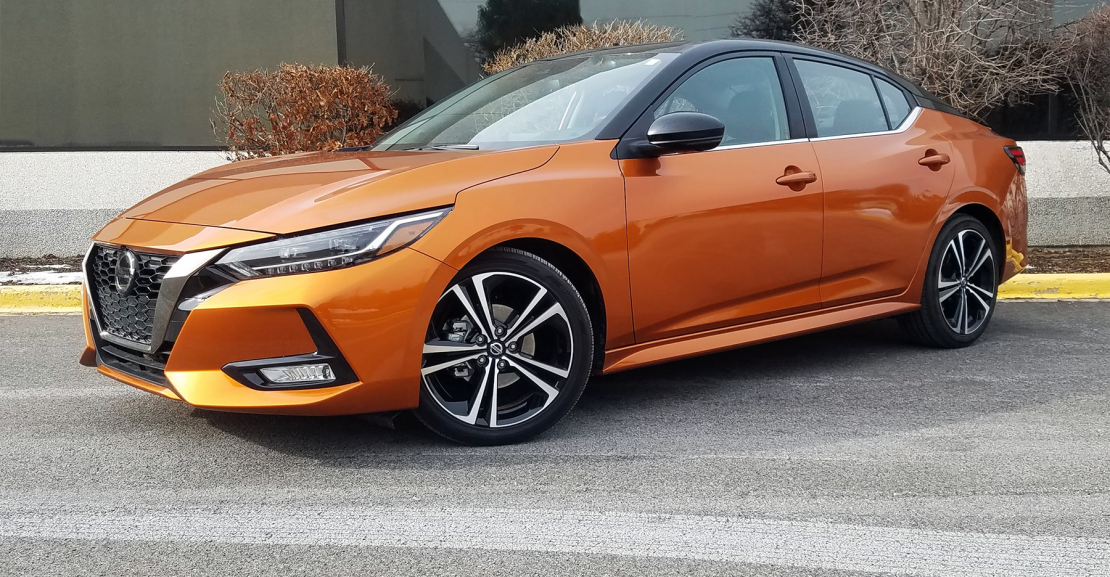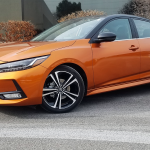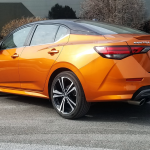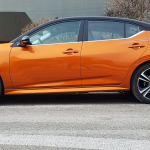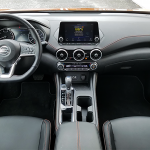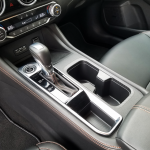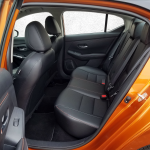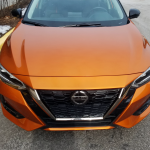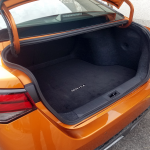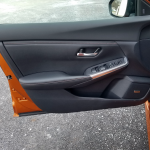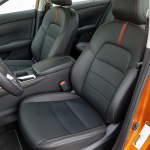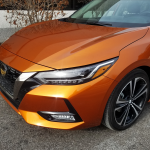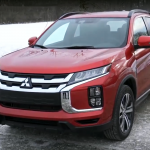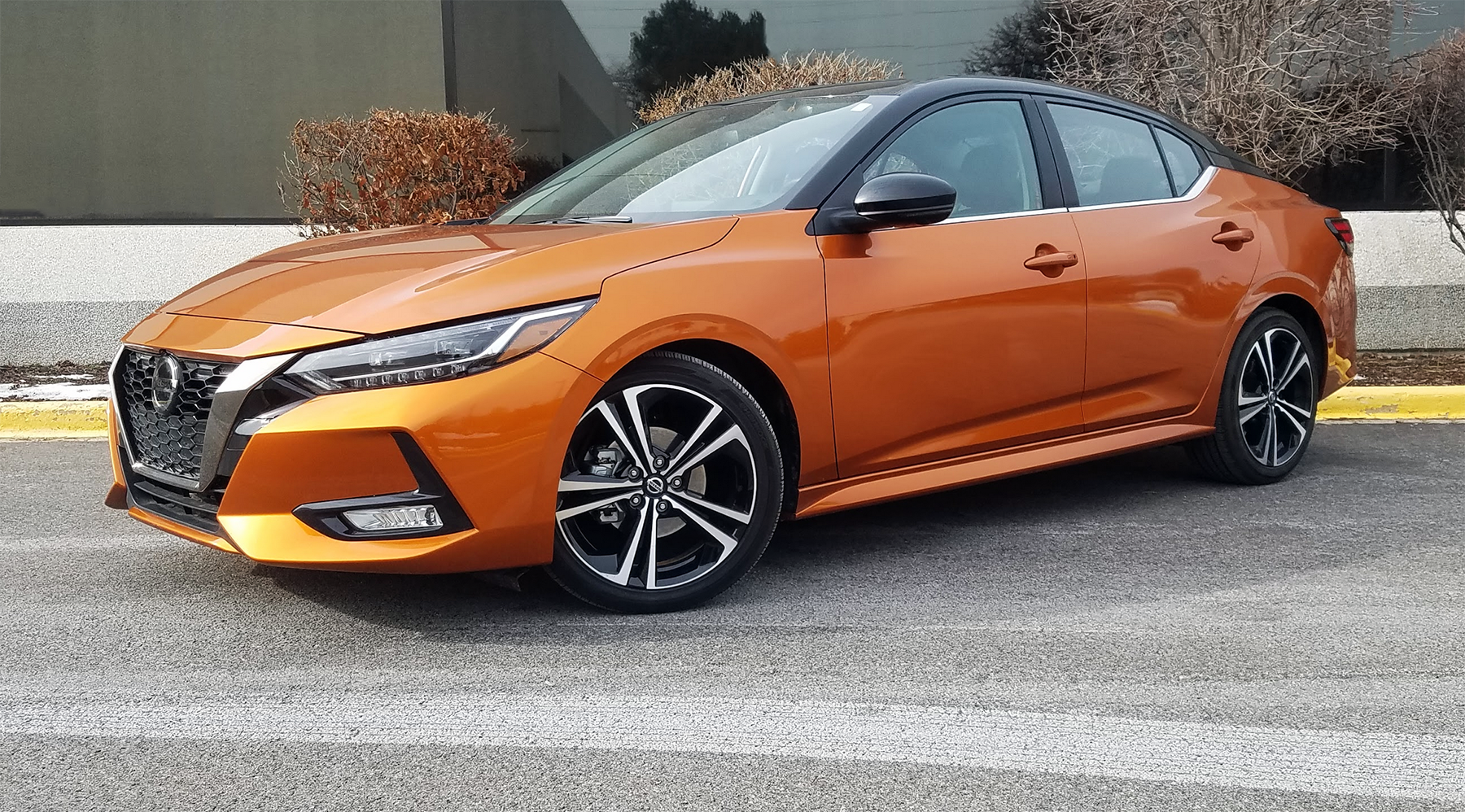
 2020 Nissan Sentra SR Premium
2020 Nissan Sentra SR Premium
Class: Compact Car
Miles driven: 248.1
Fuel used: 8.9 gallons
| CG Report Card | |
|---|---|
| Room and Comfort | B |
| Power and Performance | B- |
| Fit and Finish | B |
| Fuel Economy | B- |
| Value | B+ |
| Report-card grades are derived from a consensus of test-driver evaluations. All grades are versus other vehicles in the same class. Value grade is for specific trim level evaluated, and may not reflect Consumer Guide's impressions of the entire model lineup. | |
| Big & Tall Comfort | |
| Big Guy | B |
| Tall Guy | B |
| Big & Tall comfort ratings are for front seats only. "Big" rating based on male tester weighing approximately 350 pounds, "Tall" rating based on 6'6"-tall male tester. | |
| Drivetrain | |
| Engine Specs | 149-hp 2.0-liter |
| Engine Type | 4-cyl |
| Transmission | CVT |
| Drive Wheels | FWD |
Real-world fuel economy: 27.9 mpg
Driving mix: 50% city, 50% highway
EPA-estimated fuel economy: 28/37/32 (city, highway, combined)
Fuel type: Regular gas
Base price: $21,430 (not including $925 destination charge)
Options on test vehicle: Premium Package ($2170); premium 2-tone paint ($595); floor mats ($205)
Price as tested: $25,325
Quick Hits
The great: Value pricing; passenger space in both front and rear seats
The good: Generous list of available comfort, safety, and technology features; dynamic styling
The not so good: Steering feel isn’t very communicative; only one powertrain available
More Sentra price and availability information
John Biel
You may have heard that some automakers are backing away from building sedans. Some automakers are not Nissan.
While certain brands are scaling back the number of four-door passenger cars they offer—if not axing them all—Nissan actually maintains dual entries in both the compact and midsize segments. In fact, both of its compacts are redesigned for 2020.
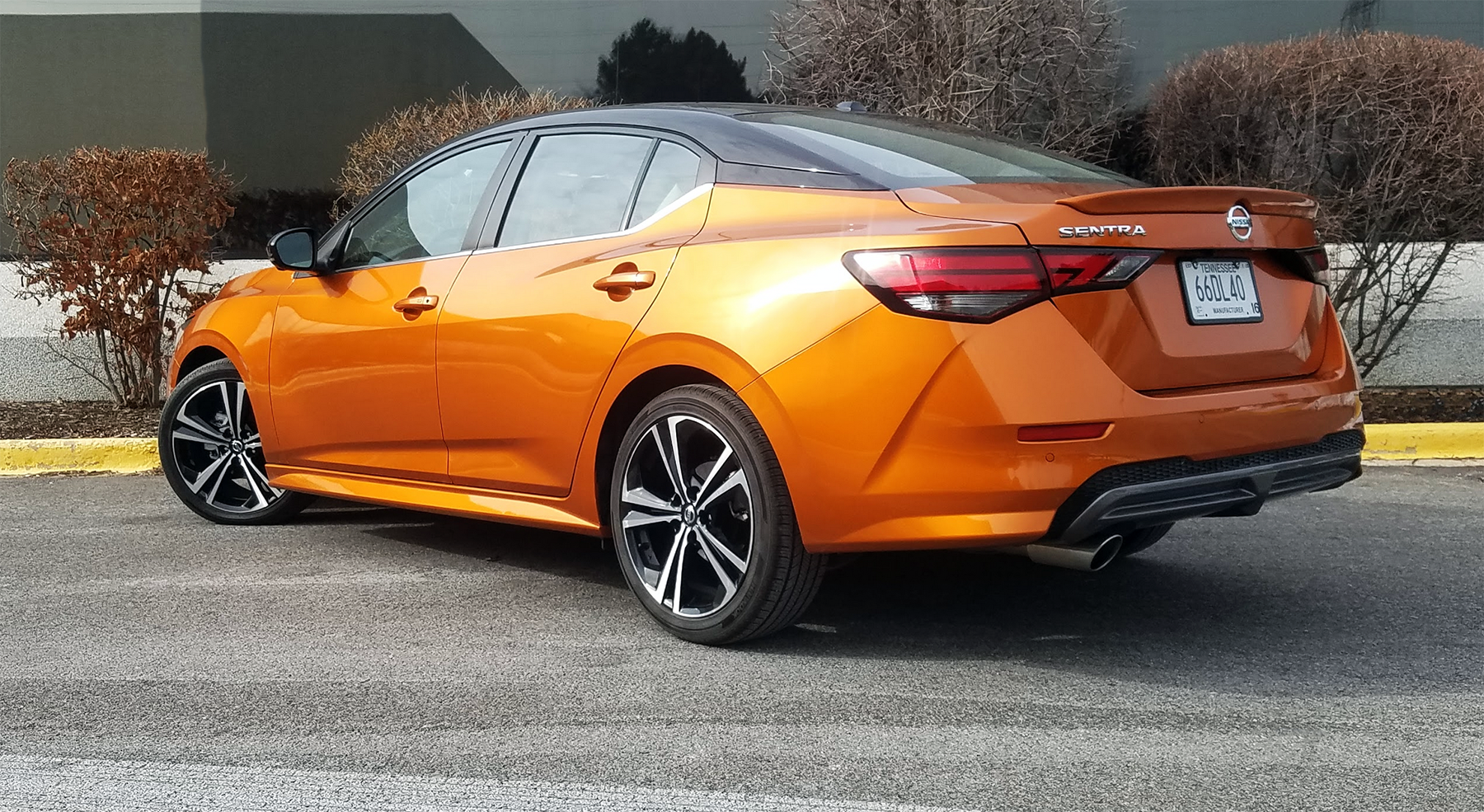
Between the Sentra and Versa, the somewhat larger Sentra is the better seller. (Automotive News year-end U.S. sales figures for 2019 show that the Sentra drew 184,618 buyers while 66,596 Versas found homes.) While a redesign year might seem like an ideal time for an automaker to realign its product mix, there didn’t seem to be any burning need for Nissan to consolidate its small-sedan offerings.
Consumer Guide editors logged some miles in the new Sentra SR, the top of the three available trim levels. The lower and wider ’20 Sentras sport crisp new styling. There are new technology features and a reduction to a single powerteam.
Quick Spin: 2020 Hyundai Elantra Limited

Motivation now comes from a 2.0-liter 4-cylinder engine that puts out 149 horsepower and 146 lb-ft of torque. That’s 25 more ponies than the previously standard 1.8-liter engine made—but considerably less than the 188 from the discontinued available 1.6-liter turbocharged four. Also gone from Sentraland is a manual transmission; the only “gearbox” available now is a continuously variable (CVT) automatic.
Powertrain performance is snappy, if not particularly refined, from a start. The Sentra roams the highway without much fuss, and takes advantage of alert transmission behavior. Indeed, for a CVT, the one in Nissans performs better than the average. Even with the standard engine upgrade, Sentra’s EPA fuel-economy ratings have improved slightly. The SR is tagged for 28 mpg in the city, 37 mpg on the highway, and 32 combined (versus 29/39/33 for the S and SV). This driver got 28.2 mpg after a stint of 161 miles that included 35 percent city-type driving.
Quick Spin: 2019 Volkswagen Jetta SEL Premium
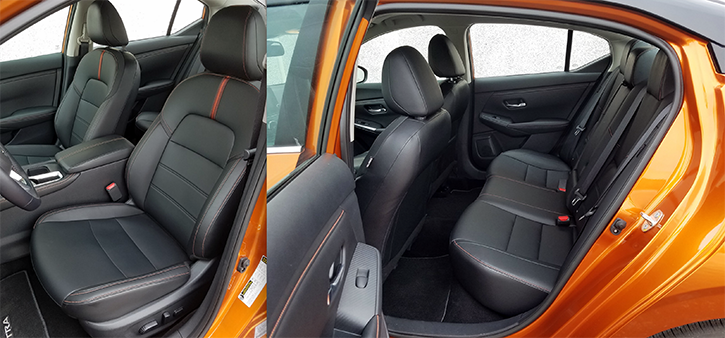
The Sentra is no sport sedan. Sometimes-leaden steering feedback sees to that. The rest of the time, the car handles and maneuvers pretty well. Neither is the Sentra a luxury sedan, but it was nice to find the ride not terribly upset on Chicago’s occasionally rough pavement.
Even as the Sentra’s top model, the SR starts at just $22,355 with delivery. All Sentras come with Nissan Safety Shield 360 tech: automatic emergency braking with pedestrian detection, blind-spot alert, rear cross-traffic alert, lane-departure warning, high-beam assist, and rear automatic braking. In common with the SV, the nominally sportier SR delivers dual-zone automatic climate control, an 8-inch touchscreen, and Apple CarPlay/Android Auto smartphone compatibility. Standard equipment that defines the SR includes 18-inch alloy wheels, a dark-chrome treatment for the grille, LED headlights and fog lights, heated exterior mirrors with black-painted shells, a rear spoiler, lower-bodyside sill extensions, chrome exhaust finisher, leather shift knob, and sport-cloth seats with orange contrast stitching.
Quick Spin: 2020 Toyota Corolla Hybrid LE
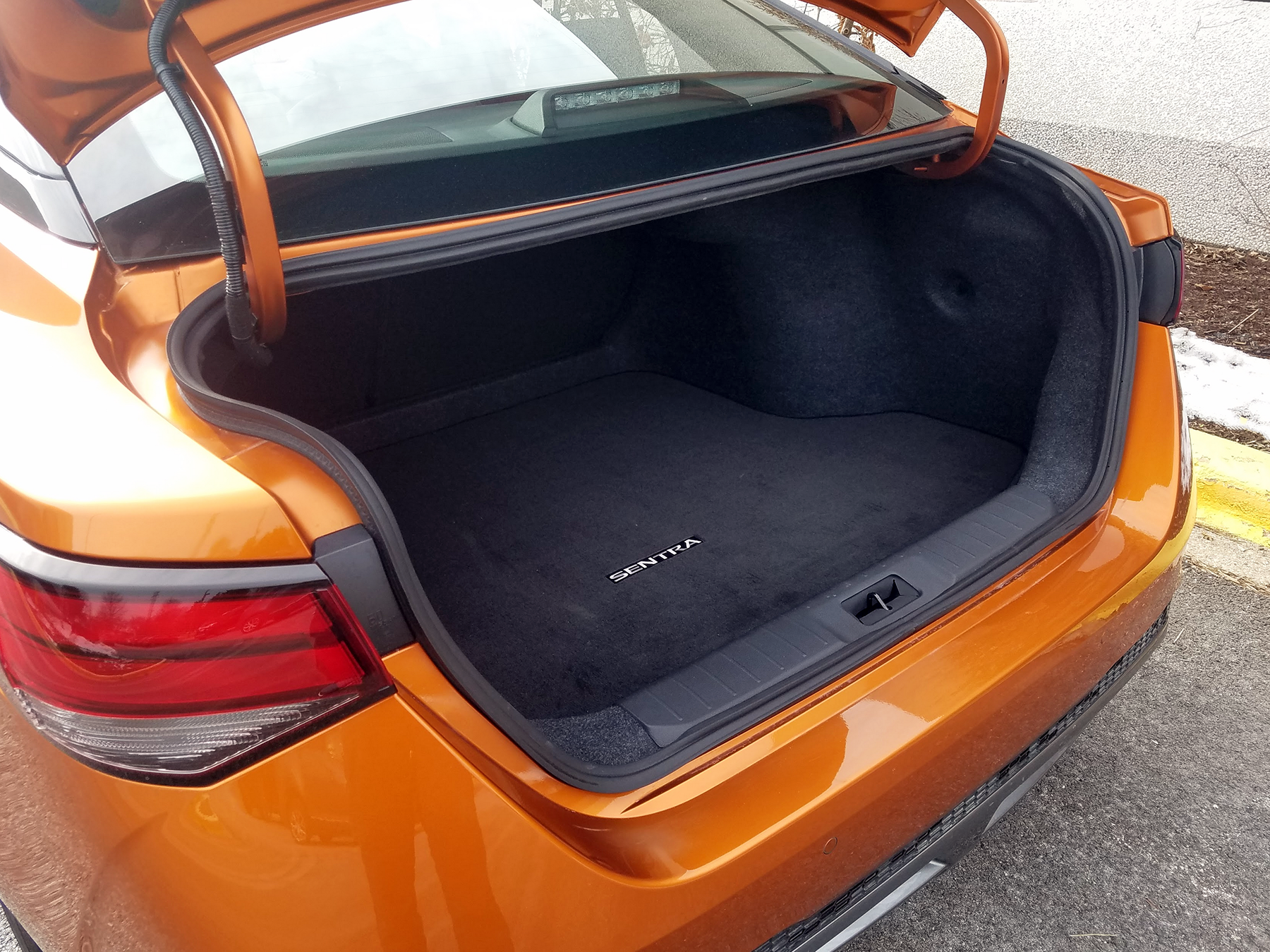
The test car rounded out to $25,325 with a set of floor mats, a Super-Black-over-Monarch-Orange premium paint job, and the Premium option package. The SV and SR have slightly different Premium packages; the SR’s consists of thin-lens headlamps, a power moonroof, auto-dimming rearview mirror, illuminated visor vanity mirrors, leatherette upholstery, heated steering wheel and front seats, 6-way power driver’s seat, 8-speaker Bose audio system, and “Intelligent Around View” 360-degree monitor.
Most passengers should find good leg- and headroom in either row, even for adults sitting in back. Should you need to talk a third grown-up into riding in the middle of the rear seat, you won’t feel guilty about it—the floor hump isn’t too high or too wide. The SR has soft, compressible surfaces on the dash and door centers. The same is true of the tops of the front doors, but rear doors have an unyielding hard-plastic surface.
Audio-system controls are easy to use and program via the convenient touchscreen. Volume and tuning knobs help, too. Climate controls present a good-news/bad-news situation, with handy dials to make temperature settings, but repetitive-push buttons to adjust things like fan speed and mode. Incidentals storage is addressed by a generous glove box, small console box, small pockets in the doors (those in back are really small), big bin at the front of the console near the various device inputs, a pouch on the back of the front passenger seat, and open cup holders in the console and pull-down rear armrest.
For luggage and other cargo, the trunk is acceptably large, just not astounding. Sickle-shaped hinges intrude on the load area. Rear seats, divided 60/40, fold well above the level of the trunk floor, wheel houses narrow the space around the trunk/rear-seat interface, and a bulkhead behind the seats narrows the opening from the trunk.
Sedan sales aren’t what they once were, even just a few years ago. But with a series like the Sentra that can still pull in well more than 100,000 units a year, Nissan certainly finds it worth its while to keep its less-compact compact vital and up to date.
Test Drive: 2019 Mazda 3 Sedan
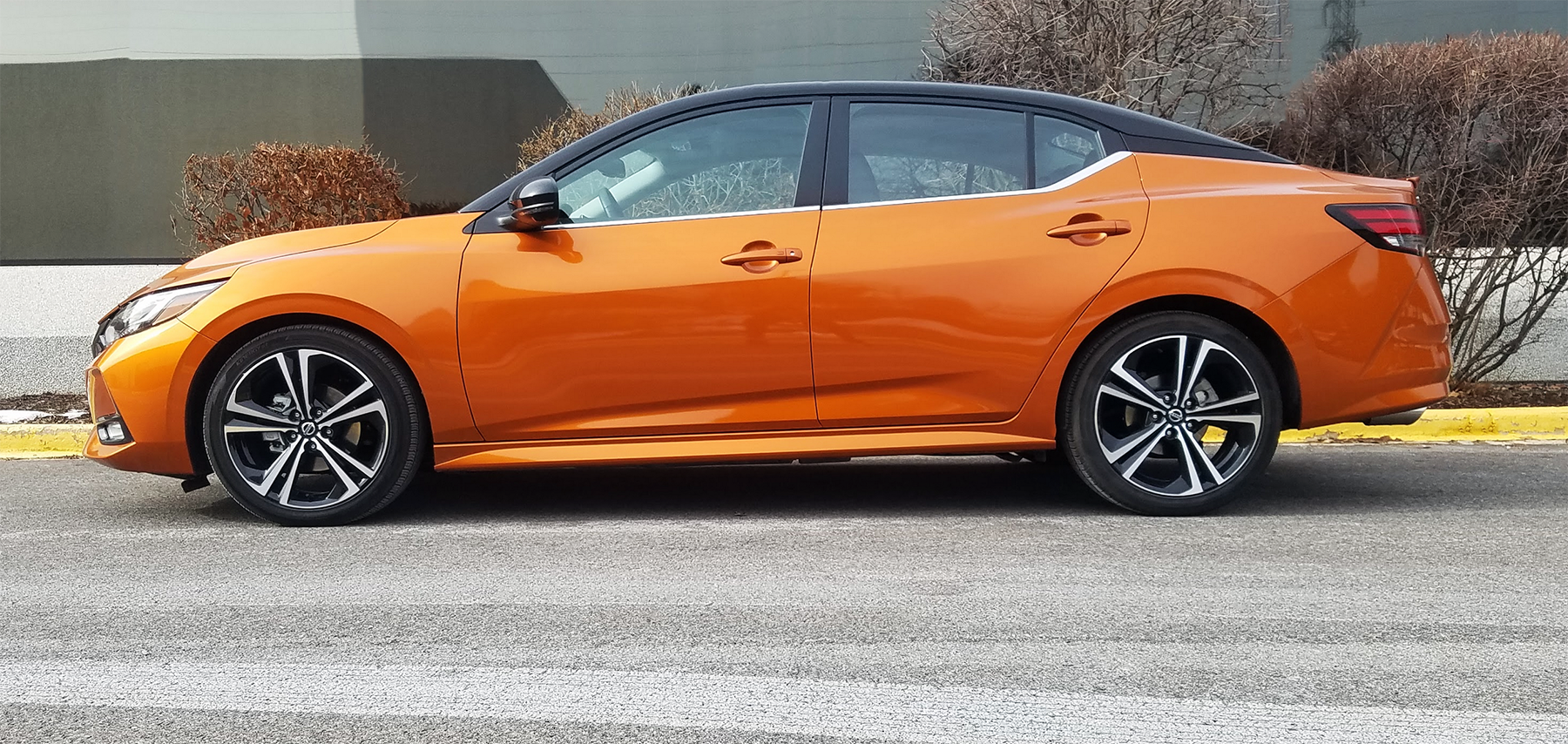
Listen to the Consumer Guide Car Stuff Podcast
2020 Nissan Sentra SR

